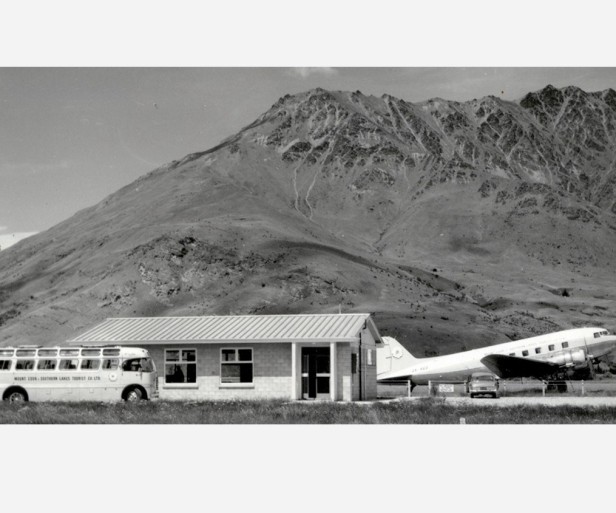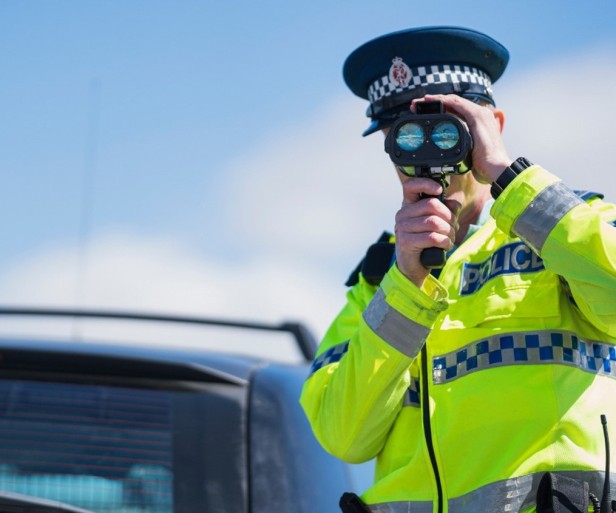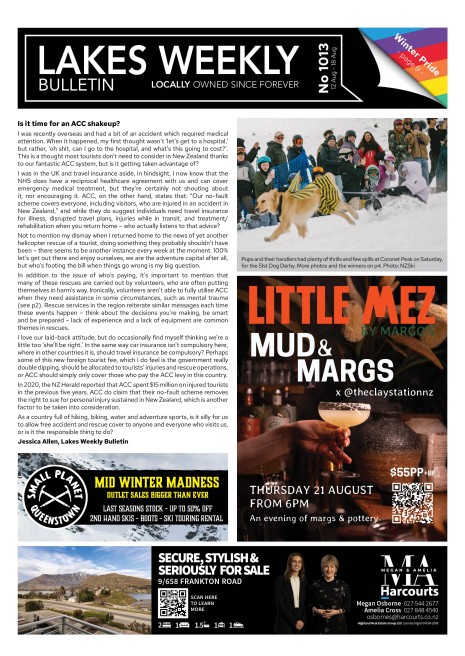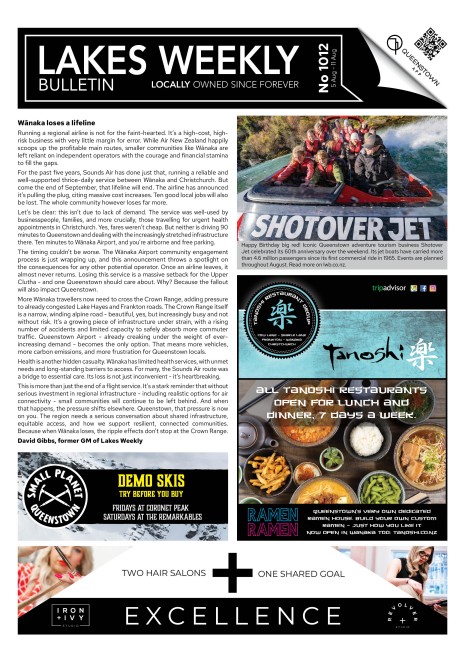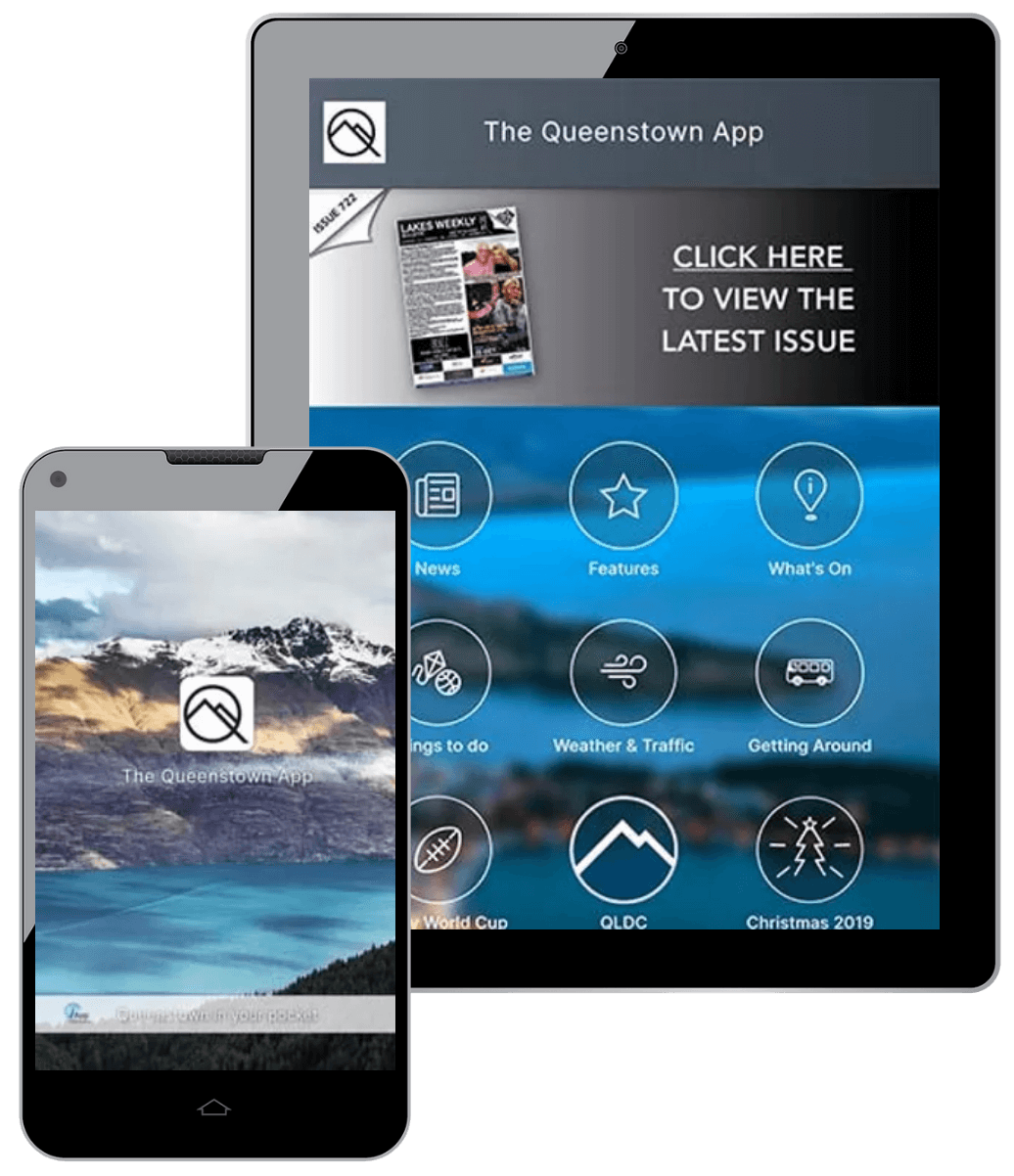Crypto outbreak likely caused by poo in water

Detailed investigations by Te Whatu Ora – Health New Zealand into the source of the current cryptosporidium outbreak in Queenstown have concluded the most likely source is "human faecal contamination of the water supply".
It means a boil water notice will remain in place for areas supplied water from the Two-Mile water treatment plant, following direction from drinking water regulator, Taumata Arowai.
Queenstown Lakes District Council (QLDC) is working to put in place protozoa barriers at the plant by 8 December.
Medical officer of Health, Dr Michael Butchard, said health experts, supported by ESR, had carefully examined all the information gathered by authorities since the outbreak began.
This included analysis of the outbreak’s epidemic curve, detailed case interviews with affected people, genotyping of samples, geo-spatial analysis mapping of cases, and ongoing water testing.
"Based on all the gathered information to date, our most likely hypothesis is that the outbreak started through human faecal contamination of the source water in Lake Wakatipu, which has then been collected into the Two-Mile water treatment plant’s intake pipes, then gotten into the water reservoir.
"From there, it has then been distributed around the Two-Mile water distribution network to homes and businesses, most likely over a number of days.
"While the results are unable to tell us exactly where the contamination came from, genotyping shows that the outbreak cases are all linked since they are all of the same hominis genotype, which is also evidence of a human rather than an animal source.
"There could also be a number of possible contamination sources, as only a very small amount of faecal contamination – for example from just one person – is enough to cause an outbreak of crypto.
"Possible sources could have included sewage dispersal from watercraft near the Two-Mile Lake Wakatipu drinking water intake, contamination from swimmers or other lake users, wastewater overflows or other undetected faults in the wastewater system. But we are unlikely to ever know."
Dr Butchard says while water testing had not shown any positive results for Cryptosporidium, testing itself was complex and not always conclusive, meaning that negative crypto results from water testing cannot rule out water contamination being the source.
Additionally, investigations had not flagged any food, beverage, event, or location as a source of the outbreak – leading authorities to conclude water contamination as the likely cause. This was further supported by the fact that the boil water notice put in place on 18 September had effectively halted the continuous source of contamination.
"We know the boil water notice in particular, along with other public health measures, has been very effective in halting the spread of crypto, and we thank everyone across the community who has played their part in following the advice to help limit the spread," Dr Butchard says.
"However, crypto is still very much present in the community, with a high risk of re-infection and person-to-person spread. This means the risk of further spread of crypto is still very real, and higher than before the outbreak began.
"This is why we fully support the direction from Taumata Arowai and QLDC that the boil water notice remains in place for the Two-Mile Water Treatment Plant distribution zone, until such time as a protozoa barrier is put in place.
"In the meantime, we continue to strongly encourage the community to boil water, wash and dry hands thoroughly and take care to avoid swimming pools and facilities where crypto could be spread."
As of 10 am, Friday, 6 October, there are 62 confirmed cases of cryptosporidium (crypto) and 18 probable cases. Twenty-four cases are under investigation.
Taumata Arowai Head of Regulatory, Steve Taylor, says the agency endorsed the public health advice while the QLDC worked to resolve the protozoa barrier issue.
"The Compliance Order we’ve served requires the Council to advise consumers to boil water until a protozoa barrier is in place at the Two-Mile water treatment plant, and this remains in effect.
"Protozoa and other waterborne microorganisms can present a serious risk to public health, that’s why a multi-barrier water treatment system is required. The Queenstown supply at the Two-Mile water treatment plant is currently operated without a protozoa barrier.
"We are working with QLDC to ensure a cost-effective and pragmatic source water testing plan continues," Taylor says.
A boil water notice for thousands of residents and business on the Kelvin Heights water supply, including Frankton, was lifted on Thursday after QLDC isolated it fully from the Queenstown overall supply.
- Te Whatu encourages anyone with symptoms to contact their GP, hauora provider or call Healthline on 0800 611 116.



